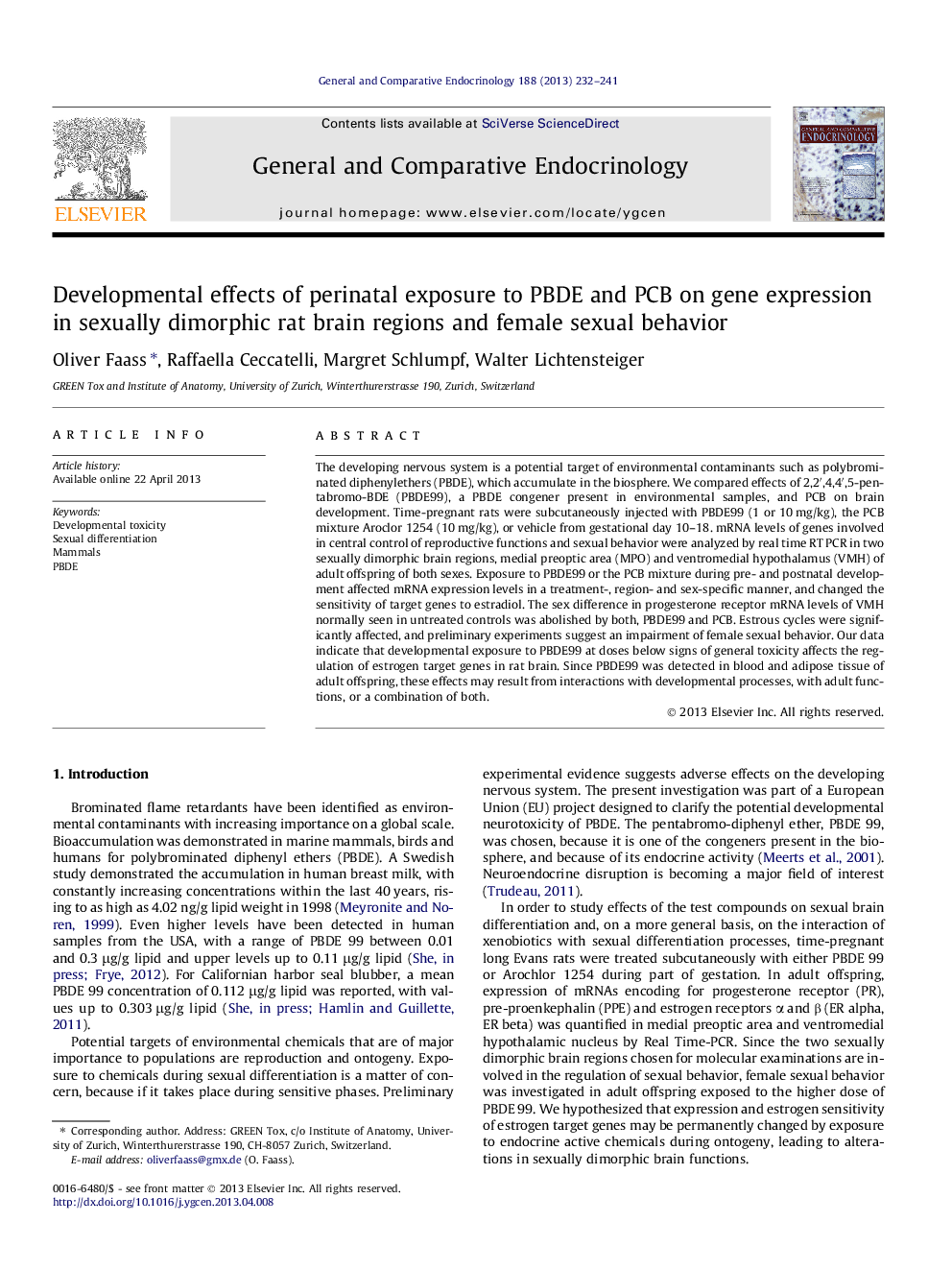| Article ID | Journal | Published Year | Pages | File Type |
|---|---|---|---|---|
| 5901381 | General and Comparative Endocrinology | 2013 | 10 Pages |
Abstract
The developing nervous system is a potential target of environmental contaminants such as polybrominated diphenylethers (PBDE), which accumulate in the biosphere. We compared effects of 2,2â²,4,4â²,5-pentabromo-BDE (PBDE99), a PBDE congener present in environmental samples, and PCB on brain development. Time-pregnant rats were subcutaneously injected with PBDE99 (1 or 10Â mg/kg), the PCB mixture Aroclor 1254 (10Â mg/kg), or vehicle from gestational day 10-18. mRNA levels of genes involved in central control of reproductive functions and sexual behavior were analyzed by real time RT PCR in two sexually dimorphic brain regions, medial preoptic area (MPO) and ventromedial hypothalamus (VMH) of adult offspring of both sexes. Exposure to PBDE99 or the PCB mixture during pre- and postnatal development affected mRNA expression levels in a treatment-, region- and sex-specific manner, and changed the sensitivity of target genes to estradiol. The sex difference in progesterone receptor mRNA levels of VMH normally seen in untreated controls was abolished by both, PBDE99 and PCB. Estrous cycles were significantly affected, and preliminary experiments suggest an impairment of female sexual behavior. Our data indicate that developmental exposure to PBDE99 at doses below signs of general toxicity affects the regulation of estrogen target genes in rat brain. Since PBDE99 was detected in blood and adipose tissue of adult offspring, these effects may result from interactions with developmental processes, with adult functions, or a combination of both.
Related Topics
Life Sciences
Biochemistry, Genetics and Molecular Biology
Endocrinology
Authors
Oliver Faass, Raffaella Ceccatelli, Margret Schlumpf, Walter Lichtensteiger,
